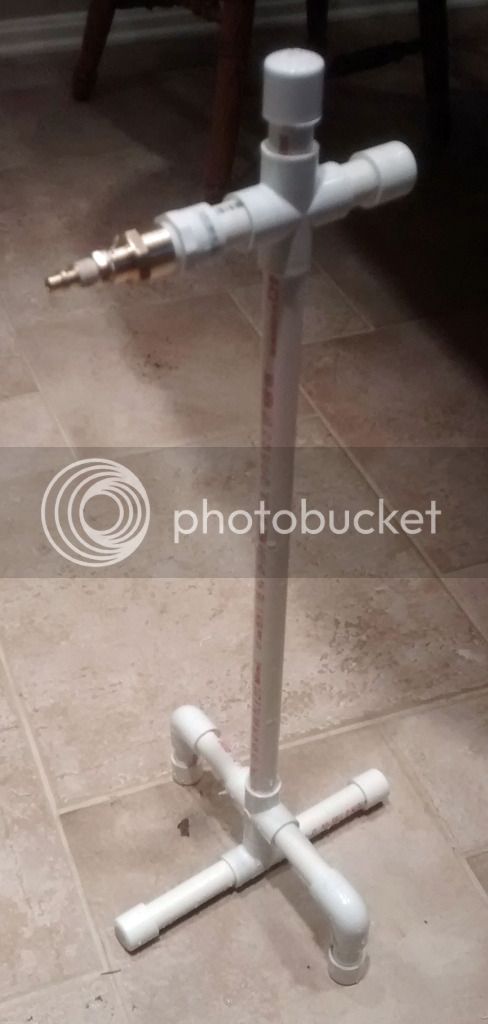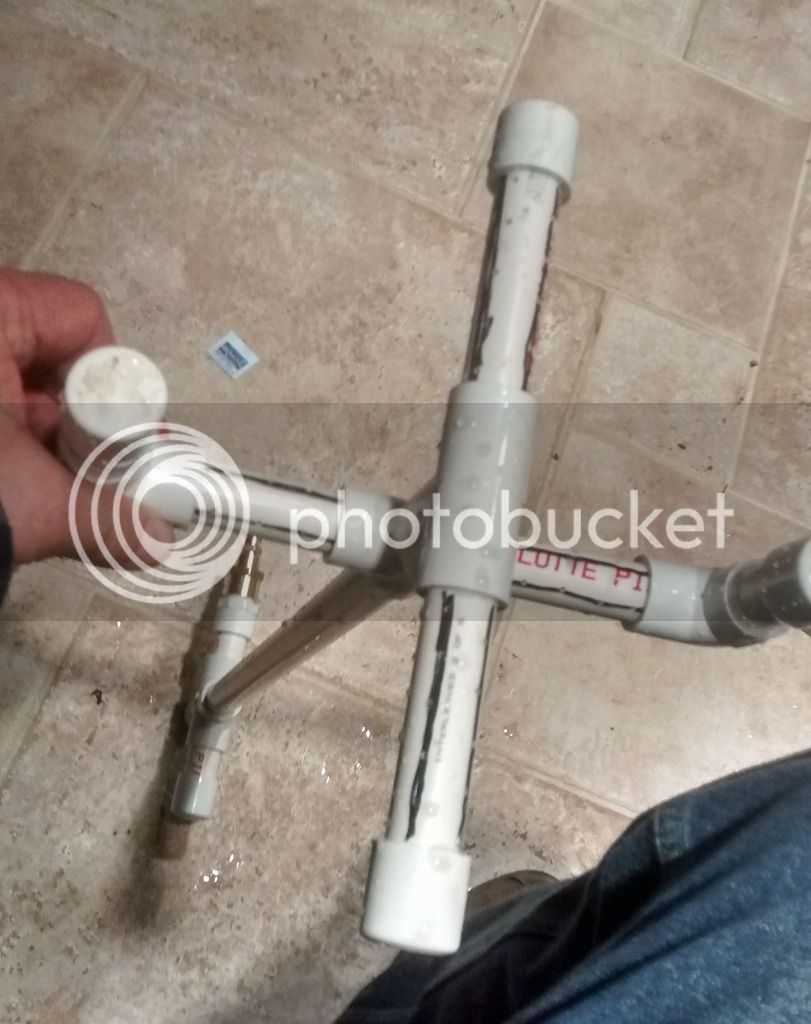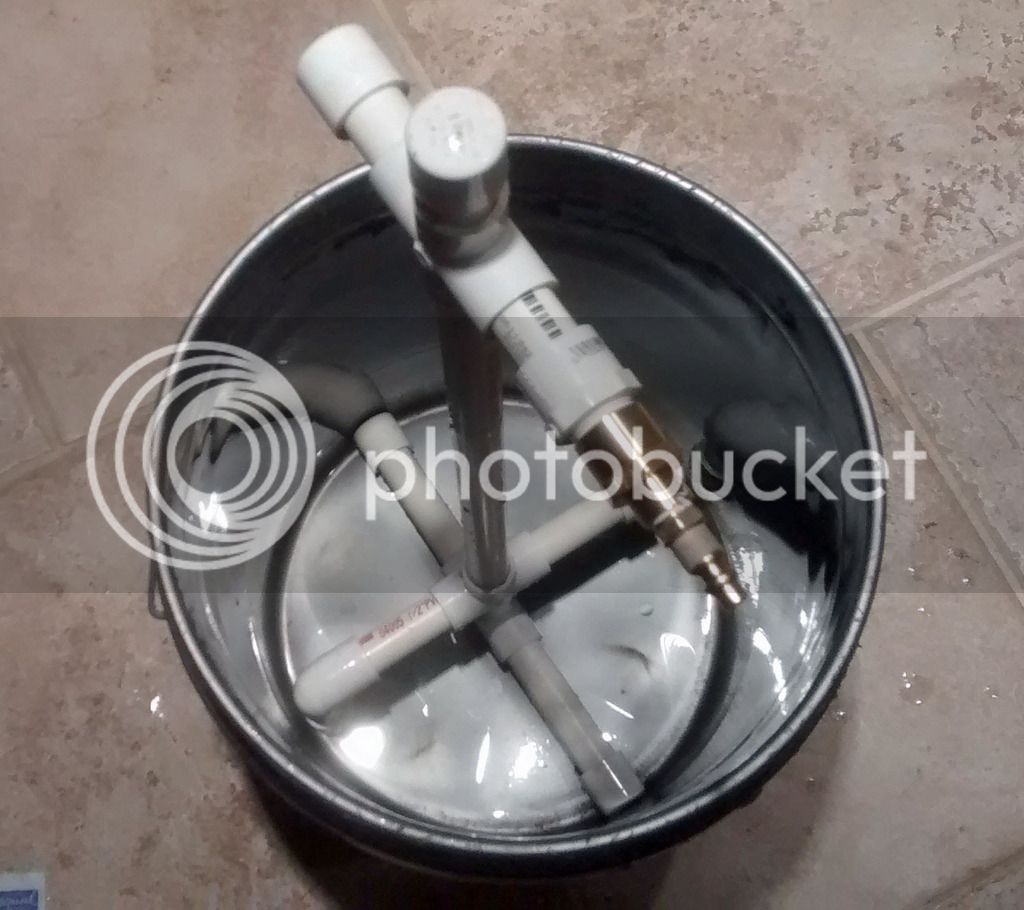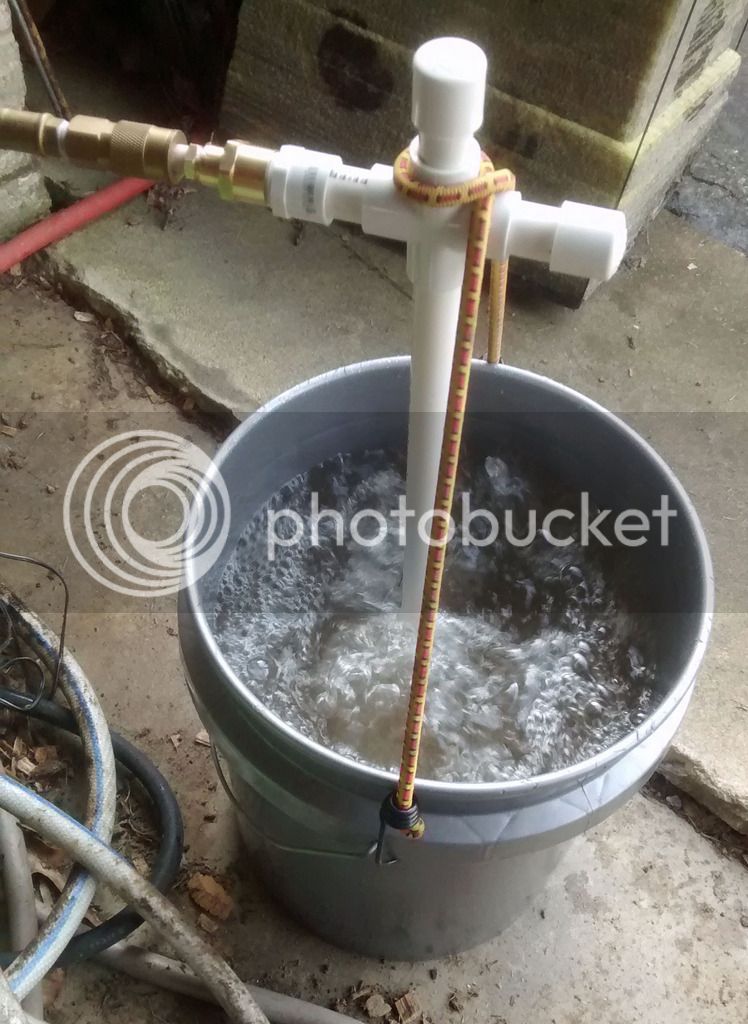Quote:
==================================
Originally Posted by
wbpdeer
MThompson,
You have experience with the compost tea procedures. I planted 46 Chinese chestnuts & Dunstans in late April of 2015.
Tell me how to treat / apply the compost tree to these seedlings this spring to help my trees out.
Some are 2 1/2 feet tall and some are 4 feet tall. They have landscape fabric around them and I put moisture miser in the hole when I planted them. I planted 47 but 46 survived. I water them during the hot stressful times. I like landscape fabric for moisture conservation.
The less you assume - probably the better off I will be.
Thanks
==================================
Sure thing. My version is pretty basic, but some versions use a lot of amendments like rock dust, humic acid, bat/bird guano, etc.
Supplies needed:<ul><li>5gal bucket with lid</li><li>Aquarium air pump (for 20gal tanks is big enough)</li><li>air tubing</li><li>Diffuser(s) or diffuser tubing</li><li>Satchel (burlap, t-shirt, paint strainer, etc.)
OR</li><li>a way to strain the tea before use (if you are using a sprayer)</li><li>Stones or nuts/washers or something non-toxic to hold the satchel underwater</li></ul><ul><li>4gal of clean, de-chlorinated water</li><li>1-3 lbs freshest Worm Castings you can get</li><li>1/4 cup Molasses (un-sulphated)</li><li>1 Tbsp or so of fish emulsion</li><li>And any of the other additives you have or want to add</li></ul>
Add all the ingredients to the bucket, and turn the aerator on. Let it brew for 24-48 hours....you'll see bubbles forming and that means the bacteria are fermenting and growing (along with everything else).
This is basically how I set it up, brew it and spray it on my veggies...<
If you are going to be soaking the ground, you can dilute it about at 1/2 cup per gallon or so OR build a bigger system and brew a larger batch.
For watering really spaced out trees with it, I'd make a bunch of "soaker buckets"...basically a pail with a small hole or two in the bottom. Melt the holes in with a finishing nail, and you are aiming for about 1-2 hour to drain 5 gallons....so small holes are key. Set the buckets by the tree maybe 6" from the trunk, fill with diluted tea and go to the next one and repeat....if you make 10 soaker buckets, it will take you 5 hours to water 50 trees.
The soaker buckets let the water slowly soak into the ground just like drip irrigation. This is much much better that just dumping it on all at once. Your trees will thank you for this, especially any new transplants.
Or, depending on how your trees are laid out and where they are located, you can make a simple gravity-fed drip irrigation system. I have a couple 55gal drip systems set up for some stuff that is away from my main garden. Works like a charm. I would really look into this if you have rows of trees and have any slope to the land at all....One system for each row, up to about 100ft or so. Or, if you can get an IBC and build a stand for it, you can get more head pressure and work with the slope to get further out. (<
this video is almost exactly how I have mine set up, and I just found this video today....except I don't use drip tap, just poly pipe and emitters where I need them.)
This is getting into a different thread and conversation now...




